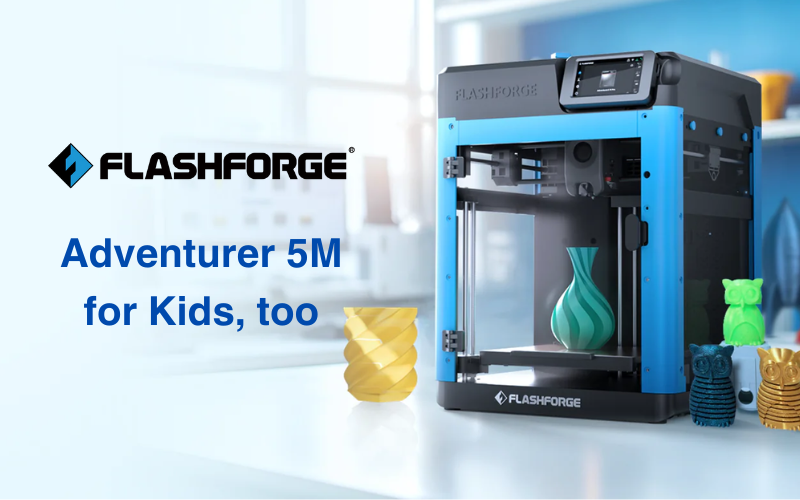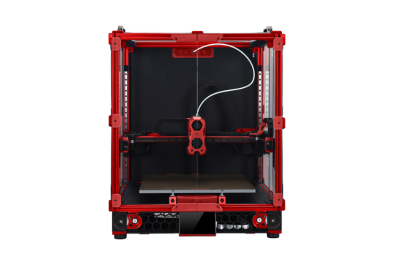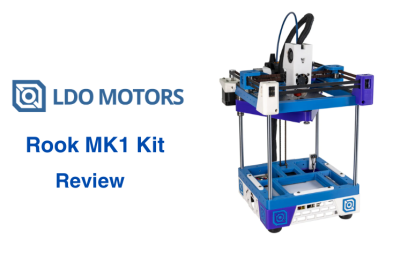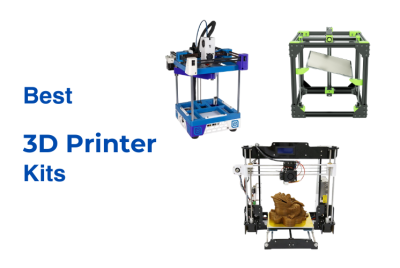Flashforge Adventurer 5M, for Kids Too?
Flashforge got its start in 2011 with the Creator, a desktop 3D printer that became popular for its affordability and open-source features. A key moment for the company was the launch of the Adventurer series, which aimed to simplify printing with features that reduced setup time and maintenance.
Flashforge’s lineup includes machines for beginners, educators, and professionals. The Guider series, for example, includes larger printers designed for businesses and serious makers who need extra build space. The Creator series focuses on dual-extrusion models for printing with multiple materials or dissolvable supports. The Finder and Adventurer series are popular among classrooms and hobby users, thanks to their simpler controls and enclosed designs. Flashforge also developed its own slicer, FlashPrint, which helps users prepare 3D models without needing advanced technical skills.
One of the models in particular has been well-liked by the community because it’s fast, easy to use and prints reliably. This model is actually one of our picks in our article, 3D Printer for Kids: Our Best Picks. This article will take a look at the Flashforge Adventurer 5M and break down what you can expect in terms of design, performance, and features to help you decide if it’s a good fit for your 3D printing setup.
Design and Build Quality
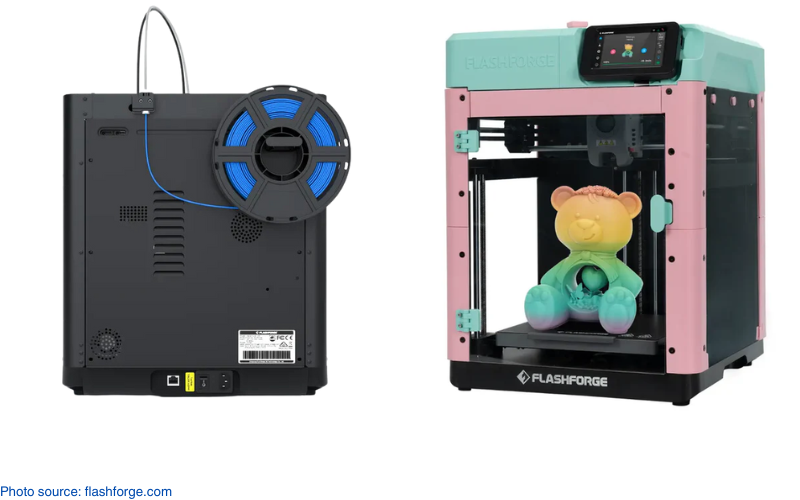
The Flashforge Adventurer 5M has a sturdy metal frame that holds up well during high-speed printing. It’s more compact than earlier models like the Adventurer 4, partly because the filament spool mounts on the back instead of being tucked inside.
The dual-sided PEI-coated build plate is a nice touch—it grips the print while it’s hot and releases it once it cools. Plus, it’s flexible, so you can pop prints off without scraping. The 220 x 220 x 220 mm build volume is big enough for school projects and hobby prints but doesn’t take up a ton of space on your desk.
The 4.3-inch touchscreen is responsive, easy to use and makes navigating the printer’s settings simple. The auto-leveling feature handles calibration right out of the box, which means you can get your first print going in about 15 minutes. Flashforge also upgraded the X and Y axes by giving each its own motor. This keeps everything stable when the print head moves fast, which helps avoid any wobble or defects in the layers. All in all, the Adventurer 5M’s design focuses on making fast printing more reliable and less of a hassle.
Key Features and Specifications
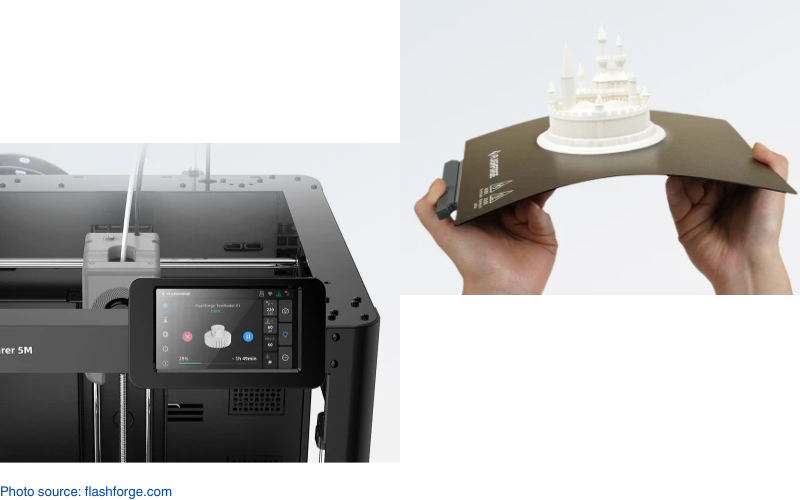
| Key Features | Specifications |
|---|---|
| High-Speed Printing | Build Volume: 220 x 220 x 220 mm³ |
| Direct Drive Extruder | Nozzle Temperature: Up to 280°C |
| Auto-Leveling System | Build Plate Temperature: Up to 100°C |
| Dual-Sided PEI Build Plate | Nozzle Sizes: 0.25mm, 0.4mm, 0.6mm, 0.8mm |
| Nozzle Variety | Max Printing Speed: 600mm/s |
| Filament Detection and Power-Loss Recovery | Acceleration: 20,000mm/s² |
| 4.3-inch touchscreen Display | Extruder Type: Direct drive |
| Filament Compatibility: PLA, PETG, TPU, ABS, ASA, PLA-CF, PETG-CF | |
| Slicing Software: FlashPrint, Orca-Flashforge, Orca Slicer | |
| Connectivity: Wi-Fi, Ethernet, USB |
The Flashforge Adventurer 5M has a 600mm/s max print speed with 20,000mm/s² acceleration. This means you can print faster without the usual trade-offs in quality. The upgraded direct drive extruder can hit 280°C, so it handles everything from standard PLA to tougher filaments like TPU and carbon-fiber blends. The auto-leveling system takes care of calibration for you, which makes a huge difference if you’re tired of fiddling with manual adjustments.
The dual-sided PEI-coated build plate grips prints while they’re hot and releases them once they cool, which makes removing prints a lot easier. The nozzle system is also flexible—you can swap between four sizes depending on how detailed or fast you want your prints. Plus, with features like filament detection and power-loss recovery, you won’t have to worry about ruined prints if the filament runs out or the power cuts out mid-project.
Comparisons
Flashforge Adventurer 5M vs Adventurer 4 Pro
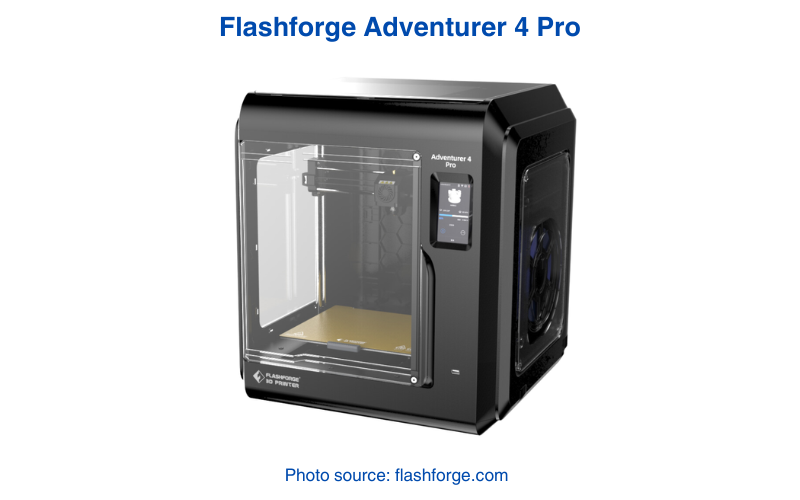
The Adventurer 5M improves on speed and user-friendliness. This is compared to the Adventurer 4 Pro, which sticks to a more traditional setup.
- Speed and Motion System: The Adventurer 5M reaches speeds of 600mm/s with 20,000mm/s² acceleration. The Adventurer 4 Pro tops out at 150mm/s, which means the 5M can complete large prints much faster.
- Setup and Calibration: The Adventurer 5M uses auto-leveling to handle calibration, so you don’t need to adjust the bed manually. The 4 Pro requires manual adjustments, which can take time and may be tricky for new users.
- Extruder Temperature and Filament Compatibility: The 5M’s extruder can reach 280°C and supports tougher filaments like PETG-CF and PLA-CF. The 4 Pro’s lower temperature limits it to basic materials, such as PLA and PETG.
- Filament Placement: The Adventurer 5M has an external filament spool mount, keeping the design more compact. The 4 Pro places the spool inside the frame, which can make it harder to load and swap filaments.
Flashforge Adventurer 5M vs Bambu Lab A1 Mini
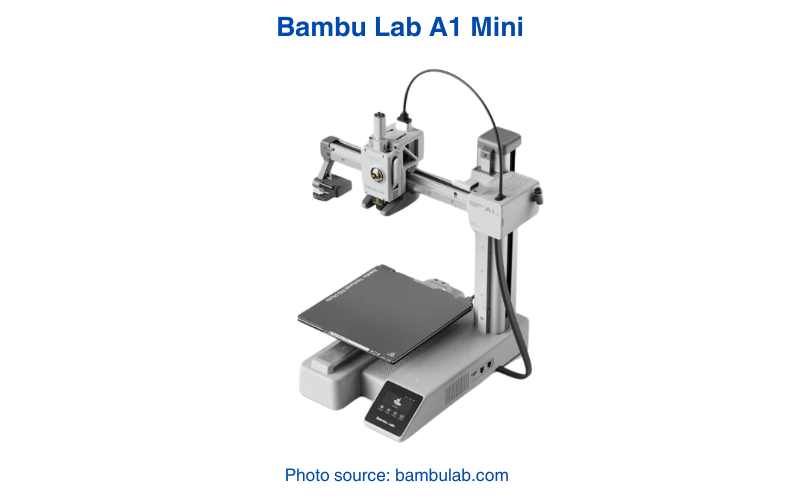
Both the Adventurer 5M and Bambu Lab A1 Mini are fast 3D printing but they have different strengths.
- Printing Speed: The Adventurer 5M prints at up to 600mm/s, while the A1 Mini runs at 500mm/s. The 5M has an edge when it comes to acceleration and top speed for larger prints.
- Nozzle System: The Adventurer 5M’s quick-swap nozzle system comes with four size options. You can switch between detailed prints and faster, thicker layers in less time. The A1 Mini’s nozzles take longer to swap and have fewer options available by default.
- Build Volume: The 5M’s build volume of 220 x 220 x 220 mm offers more room for bigger projects. The A1 Mini’s build space is smaller, which works for compact prints but may limit larger designs.
- Control Options: Both printers have Wi-Fi and app controls. The Adventurer 5M also features a 4.3-inch touchscreen for easy adjustments, which gives users another way to manage prints directly.
What Your Kids Can Do with the Adventurer 5M
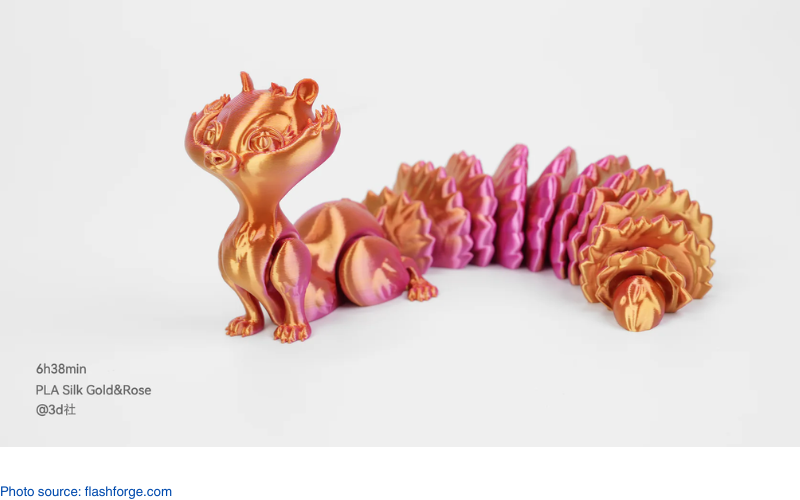
The Flashforge Adventurer 5M is built for everything, such as home projects, classroom activities and creative hobbies. Its fast printing and simple setup help keep the process smooth, so you can spend more time creating:
- Prototyping and School Projects: The Adventurer 5M is great for kids working on school projects or learning how to prototype their ideas. Its fast printing speed means they can see their designs come to life quickly, keeping them engaged throughout the process.
- Educational Activities: Teachers and parents can use this printer to introduce kids to hands-on STEM activities. The Adventurer 5M makes the process smooth with its touchscreen controls and easy filament swaps.
- Creative Home Projects: For kids who love building and creating, this printer can handle everything from small figurines to DIY toys. The filament run-out sensor and power-loss recovery help avoid failed prints, which can be discouraging for young learners. With quick setup and consistent results, they can work on projects without spending a lot of time troubleshooting.
- Fun Custom Prints: Kids can print their favorite characters, keychains, or decorations with the Adventurer 5M. The build space can handle small-to-medium-sized creations, so it is a good match for beginner-friendly designs like puzzles, animal figures, or decorative pieces.
Final Notes
The Flashforge Adventurer 5M offers speed, simplicity, and safety, making it a strong option for families, classrooms, and anyone new to 3D printing. Its fast printing and auto-leveling help keep things running smoothly, while the quick-swap nozzles make it easy to adjust for different projects. The enclosed frame keeps hot parts out of reach, and features like filament detection and power-loss recovery help prevent interruptions during longer prints.
This printer works well for school projects, creative builds, and home use without overwhelming beginners. The Adventurer 5M provides the tools you need to start creating with confidence.

